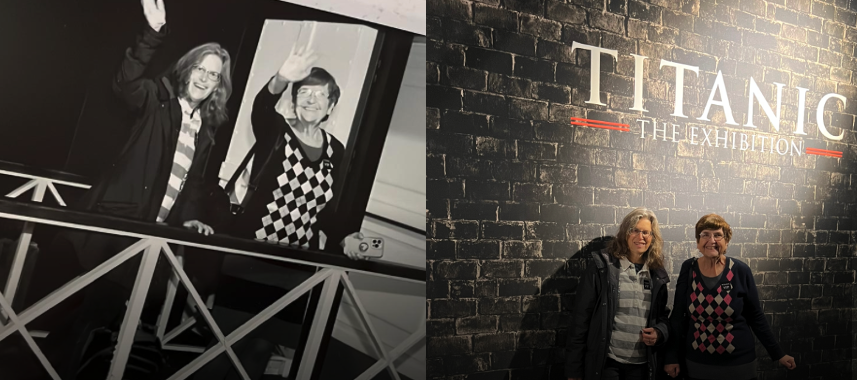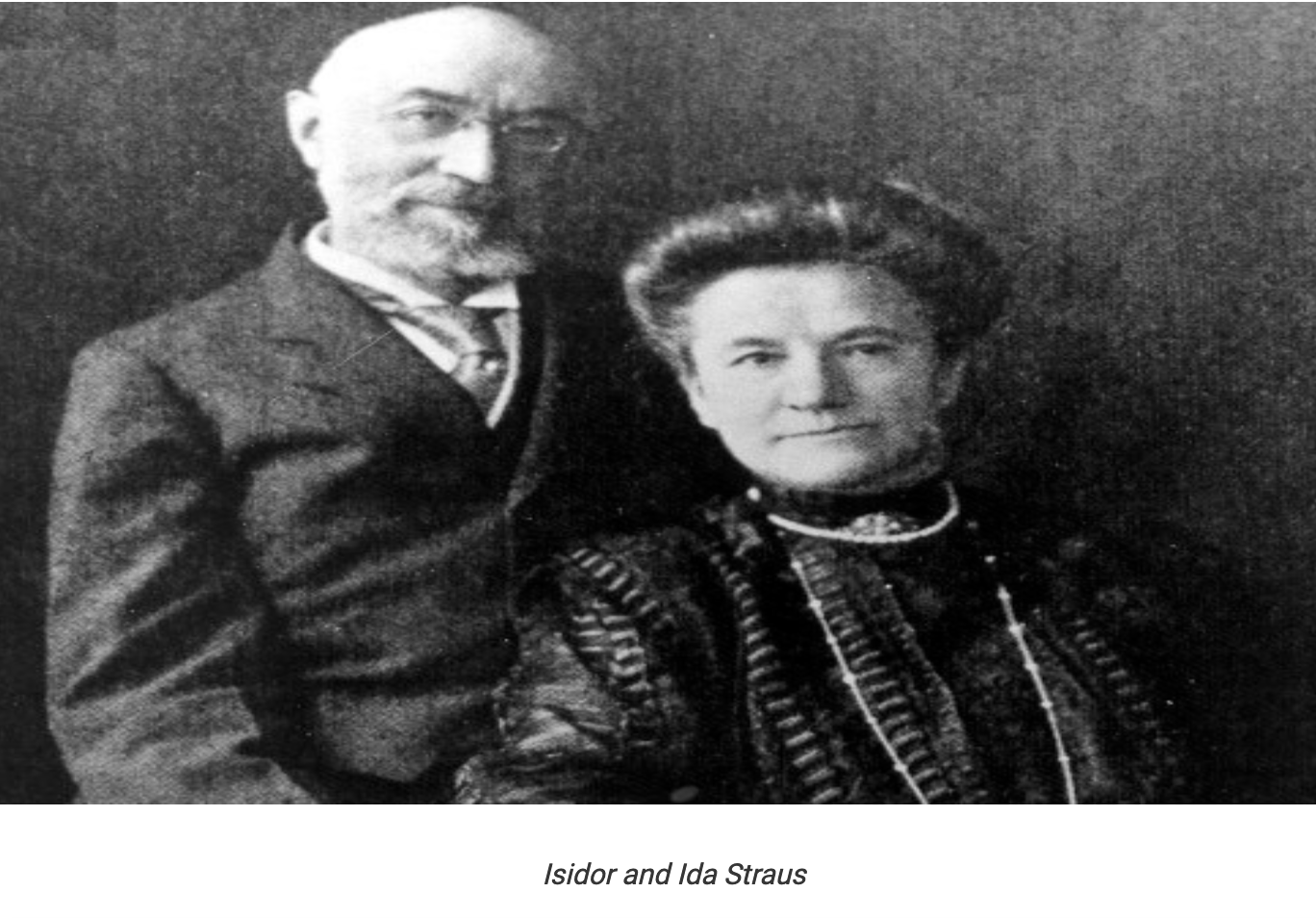Journey Back in Time Aboard the Titanic
By Sue Weston and Susan Rosenbluth – Two Sues On The Aisle
Imagine being among the 2,240 passengers and crew onboard the ‘unsinkable’ Titanic, the largest movable manmade object in 1912. Hear their stories at The Titanic Exhibition, an immersive experience created by Musealia, in partnership with Fever with contributions from Titanic historian Claes-Göran Wetterholm.
Experience the hype, hysteria, and hope. Connect with passengers and crew through an audio guide which is available in multiple languages. Gain an intimate understanding of the voyage which left London but never reached its destination New York City.
The Immersive Exhibit
The attention to detail extends to the ticket counter, a throwback to the early 1900s. We entered the exhibit by crossing the gangplank to the Titanic. The exhibit starts with an overview of the inception of the Titanic. Visitors gain an appreciation of the enormity of the project conceived by Lord William James Pirrie (chairman of shipbuilders Harland and Wolff) and J. Bruce Ismay (director of the White Star Line Shipping Company). These visionaries planned to construct three of the largest and most magnificent ships in the world: the Olympic, the Titanic, and the Gigantic (renamed the Britannic) in London, in 1907.
Wandering through displays of over 200 original objects gave us a sense of the luxury of these boats, which included wood paneling, a magnificent staircase, and stained glass. We marveled at the reconstructed rooms, including a recovered dining area set with silver and China, and the state-of-the-art watertight door system, intended to be a failsafe. It’s one thing to read about these items but walking through the collection displayed amongst handwritten letters, photographs, and keepsakes makes the Titanic voyage personal, and deepens our sense of loss.
Dates and Delays
The launch of the Titanic was delayed from the 20th of March to the 10th of April to accommodate repairs to the Olympic. Next, the Titanic faced a coal strike and a near crash with USMS New York. Some correspondence written by passengers foretold doom, while others described the grandeur of the experience.
Then the unthinkable, they sighted an iceberg. It happened at midnight on 14th April. There was not sufficient time for First Officer William Murdoc to avoid a starboard strike and the Titanic sank while the band played.
The Discovery Gallery
The search for the Titanic began immediately. We explored the Discovery Gallery which focuses on search and rescue efforts to recover the Titanic from the floor of the Atlantic. On September 1, 1985, the wreckage was discovered off the coast of Nova Scotia, Canada, approximately 800 kilometers offshore, at a depth of 4 kilometers. In 1993 extensive salvage efforts were led by George Tulloch. The gallery shows underwater photography of the recovery.
The mystery and stories from the Titanic are still captivating audiences today.
Memorabilia and Love Stories
The “Love of the Sea” necklace was gifted from Henry Samuel Morley to his lover Miss Kate Florence, the inspiration for the James Cameron film. They had planned to marry in San Francisco and start a family, but only Kate survived and gave birth to her and Henry’s daughter.
A pair of shoes were recovered that belonged to four-year-old Louise Kink. The Kink’s, third-class passengers from Zurich, were one of the few families who survived intact. A ring from third-class passenger Gerda Lindell who raced to the lifeboats with her husband Edvard. Upon realizing too many people waiting, they jumped into the water and managed to cling onto the boat. Edvard climbed into the lifeboat, while another passenger held onto Gerda’s hand until she slipped away, but the ring landed on the floor of the boat.
Each passenger brought their own hopes, dreams, and story.
A Jewish Connection
The Titanic carried 69 Jewish passengers, 39 of whom perished (14 first-class passengers, 10 second-class, 13 third-class, and two crew members) and 30 survived (17 first-class, three second-class, 10 third-class, and no crew).
One of the most famous, and romantic may be the Straus’. Isidor Straus was offered a seat in the lifeboat. He refused to board until every woman and child were safely in a lifeboat. His wife, Ida, climbed back on the ship to be with her husband quoting the Book of Ruth “Where you go, I will go, and where you lodge, I will lodge.” She went on to say “We’ve had a wonderful life together with our children and grandchildren and we will not be separated. If you stay on board, I will stay on board.” Witnesses saw them go to the starboard side of the ship, where they embraced, arm in arm until a big wave came and swept them into the sea.
Benjamin Guggenheim, like Straus, refused a seat saying, “No woman shall remain unsaved because I was a coward.” He assisted the officers in helping the women board the lifeboats.
History Comes to Life
Other familiar names associated with the voyage and exhibition include Molly Brown, Captain Edward Smith, and the heroic musicians who continued to play until the end. Wandering through the space, guided by the audio tour visitors form intimate and personal connections with the voyagers. We were struck by the contrast between the luxury of the first-class suites and the humble third-class cabin, the sheer enormity and opulence.
The Titanic Exhibition offers visitors a combination of interactive, intimate connections and traditional museum displays, to bring history to life.
The Exhibition is located at 526 6th Avenue at the Southeast Corner of W. 14th Street at 6th Avenue and is open daily except Mondays. Purchase tickets online.
*****
Two Sues on the Aisle bases its ratings on how many challahs (1-5) it pays to buy (rather than make) in order to see the play, show, film, or exhibit being reviewed.
Titanic The Exhibition Received a 4 Challah rating









